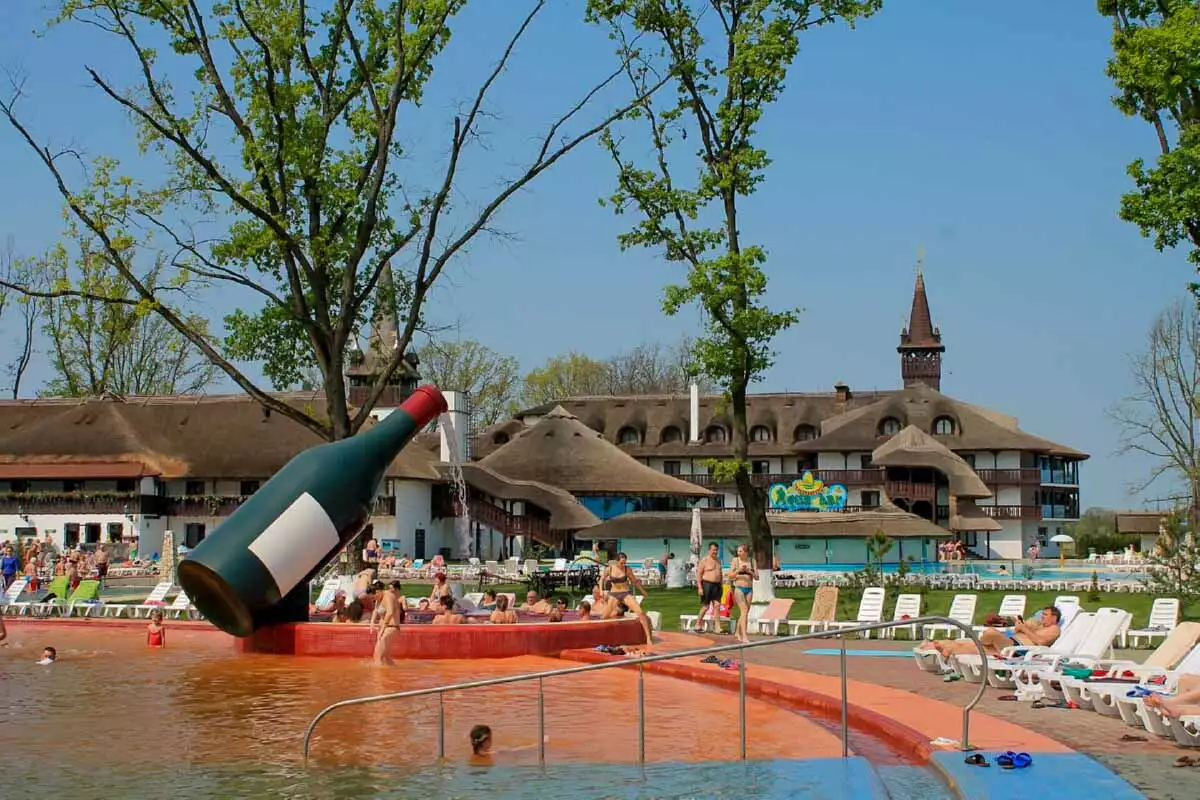A tour of ancient Uzhhorod will give you many discoveries and vivid, positive impressions. Every street and house here breathes antiquity, and the old cobblestones of the Czech or Austrian period are underfoot. And this is not surprising, as the official history of the city dates back more than 1100 years. The city impresses with a variety of architectural styles: Gothic, Baroque, Secession, Constructivism, Renaissance. And all this diversity, as a whole, creates a single architectural ensemble of Uzhhorod.
You will have a walk along the ancient Korzo Street, which means "a place for walking" in Italian slang (it justifies its name). Koryatovich Square, formerly known as Market Square, has long been famous for its market days, because back in 1380 the King of Hungary granted the city the honourable right to hold royal fairs.
One of the first theatres of our region stands on Teatralna Square, built in 1906, and the first mention of the city theatre company dates back to 1694. In front of the theatre there is a stage for public events and celebrations, decorated with a large wrought-iron image of the Uzhhorod coat of arms. The city coat of arms was approved in the mid-seventeenth century.
Behind the theatre building stands a Hasidic synagogue built in 1904. The building was constructed at the expense of an unknown benefactor. It still impresses with its grandeur and originality. Since 1947, the building has belonged to the Transcarpathian Regional Philharmonic. Concerts are held here, and the hall itself ranks third in Europe in terms of its acoustic performance.
The Uzh River is an integral part of the local history, which gave the city its name. On medieval maps, Uzhhorod was depicted as a city on an island, washed by the Malyi Uzh and the Velykyi Uzh. In all ages, the bridge across the river was located exactly where the pedestrian bridge is now, as evidenced by the old piles sticking out of the water in some places.
Uzhhorod fascinates with its embankments, a special place among which is Nezalezhnist embankment. It is on this embankment that the Uzhhorod linden alley is located, which is rightfully considered the longest in Europe. The total length of the alley is 2 km 200 m, where about three hundred trees are planted on both sides of the road. The alley, along with Korzo Street, is a favourite place for walks for Uzhhorod residents, giving them coolness, comfort and tranquillity.
An interesting attraction of the city is the Czech quarter, built in the 20s and 30s of the twentieth century in the style of constructivism. The quarter is especially beautiful in mid-April, when many magnolia and Japanese sakura trees bloom on its streets, giving the city a riot of bright colours and aromas.
The city surprises with many parks, squares and squares where rare plant species grow. The rock garden is also interesting. Here, a step away from the hustle and bustle, a brook gurgles merrily, and under the shade of old trees, sitting on a bench, two artists cast in bronze - Adalbert Erdeli and Yosyp Bokshai, who became the founders of the Transcarpathian School of Painting, are having a lively conversation.
A constant companion of the city's life is the church bell. This is especially noticeable on Sundays, when the ringing of church bells from churches of different denominations calls parishioners to worship.
Uzhhorod's European charm is largely due to the city's church architecture: old Protestant churches of Calvinists and Lutherans, the Roman Catholic Church of St George (18th century) and, of course, the Greek Catholic Cathedral, the residence of bishops (18th century). In 1777, the Austrian Empress Maria Theresa signed a decree to transfer the administration of the Greek Catholic diocese to Uzhhorod. This event turned the city into a centre of spirituality and enlightenment for many years.
From the heights of Castle Hill, through the dust of centuries, Uzhhorod Castle looks pensively at the city. According to legend, the fortress was founded by the Slavic prince Laborets in the IX century. Throughout its centuries-long history, the castle has always been a powerful stronghold, having honourably withstood many sieges, reliably guarding the road to the Uzhok Pass. The castle has retained its former grandeur, and now the Transcarpathian Museum of Local Lore is located within its walls. The museum has a rich collection of exhibits presented in the exhibition halls. Anyone who is not indifferent to history can spend hours wandering through the castle galleries, discovering the history of Uzhhorod and Transcarpathia.
In addition to the local history museum, the Transcarpathian Museum of Folk Architecture and Life is located on Castle Hill, which was the first building of its kind in Ukraine. The museum displays examples of rural architecture and the diversity of the peoples of Transcarpathia, with houses that fully recreate the interior of peasant life. The museum was built according to the type of construction of a Verkhovyna village, and there is not a single reconstruction among the exhibit houses. Some of the houses are about 200-250 years old. A special place in the collection is occupied by a wooden church from the village of Shelestovo, built by craftsmen in 1777. This unique structure, built without the use of nails, is a classic of Lemko temple architecture, where every element is filled with meaning and symbolism.
A great end to the tour can be an introduction to the world of Transcarpathian wine in Uzhhorod tasting rooms, one of which is located in the ancient cellars of Uzhhorod Castle.




